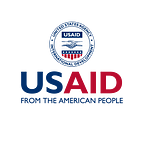5 Ways USAID Is Helping to End World Hunger
We can combat global hunger and malnutrition, but it takes a holistic approach to ensure long-lasting impact
World hunger is on the rise. Today, nearly one in 10 people around the world suffer from hunger.
The solution to combatting hunger seems simple — get food to people in need when they need it. And while we have have answered the call time and time again in response to crises and humanitarian need, supporting food security requires much more than filling people’s bellies.
Food security exists when people, at all times, have physical, social and economic access to adequate and nutritious food so they can live healthy and productive lives. When individuals and families have access to food, are educated about nutrition and how to be healthy, and can grow more crops and sell more harvests, they can be self-sufficient and resilient to future crises.
We can combat global hunger and malnutrition, but it takes a holistic approach to ensure long-lasting impact. Here are five ways USAID, through efforts like Food for Peace and Feed the Future, is investing in agriculture and food security to end hunger.
1. Improving agriculture to boost incomes
The extreme poor often rely on farming for their livelihoods. However, many smallholder farmers live far from markets where they can make a profit selling their crops. They face challenges like lack of access to credit, resources and skills needed to improve their harvest.
To ensure farmers are connected to economic opportunities through agriculture, we work with our partners — from the private sector to universities and civil society organizations — to help smallholders get the support, know-how and access they need to be successful.
For example, in Kenya, smallholder farmers who previously couldn’t compete with larger growers have boosted their crop production, minimized post-harvest losses, and connected to markets with skills gained from USAID. Some are even selling their surplus crops to the UN World Food Program to help feed other communities in drought-prone areas.
Through Feed the Future, in particular, we’re helping developing countries build stronger food systems that provide opportunities for rural communities — from farms to markets to tables — by investing in agriculture and bringing partners together.
2. Teaching shared responsibility for health and nutrition
Educating people on proper nutrition, sanitation and hygiene so they stay healthy is crucial to addressing food insecurity. For example, lack of safe drinking water and poor sanitation and hygiene can lead to waterborne diseases and chronic intestinal infections, robbing children of their potential and keeping farmers from tending to their fields.
Health and nutrition efforts take root when people adopt the right behaviors, such as washing their hands before preparing food. Trainings can empower all household members to share in these responsibilities. In some communities, this has changed the social dynamics in a family, making the distribution of household duties more equitable between men and women.
For example, in Zimbabwe a forward-thinking group of men now collect water for the family — traditionally a woman’s role. They have constructed latrines and hand-washing stations, and are training others on proper hand washing and the need to use soap or ash in addition to water.
3. Empowering women in agriculture
Likewise in Uganda, where men typically raise livestock and keep the sales, women are challenging traditional gender roles by learning goat herding skills and generating incomes themselves.
Empowering women to start businesses can help ensure their families earn enough money to put food on the table. In Haiti, female farmers who were once chronically food insecure can now feed their families, expand their businesses and save for their children’s futures. In Senegal, rural women are getting the tools they need with USAID’s help to grow, share, and sell more nutritious food for better health and extra profit.
4. Managing natural resources and preparing for disasters
For communities that rely on natural resources for their income, learning about sustainable resource management is vital. Years of poor management — such as overgrazing by livestock — can degrade farmland, making it difficult for farmers to earn a living.
We also educate communities on the impacts of natural disasters and how to prepare for them.
In Malawi and Ethiopia, we equip farmers and pastoralists with tools and opportunities that help their communities build resilience so they can better withstand crises such as droughts. Helping vulnerable people build resilience to crises is vital to addressing poverty and hunger.
5. Meeting Immediate Needs
We also provide humanitarian assistance to communities in crisis. In emergency situations, such as the aftermath of a natural disaster, we meet the immediate food and nutrition needs of communities through in-kind food, cash transfers or food vouchers.
In Sierra Leone, we helped families get back on their feet after Ebola by providing cash transfers so mothers could buy food for their families. These moms also had an opportunity to join community savings groups, allowing them to start small businesses and farms — and get a head start on a more hopeful future.
About the Authors
Beth Dunford is Assistant to the Administrator in USAID’s Bureau for Food Security and Deputy Coordinator for Development for Feed the Future, the U.S. Government’s global hunger and food security initiative. Matthew Nims is Acting Director of USAID’s Office of Food for Peace.
